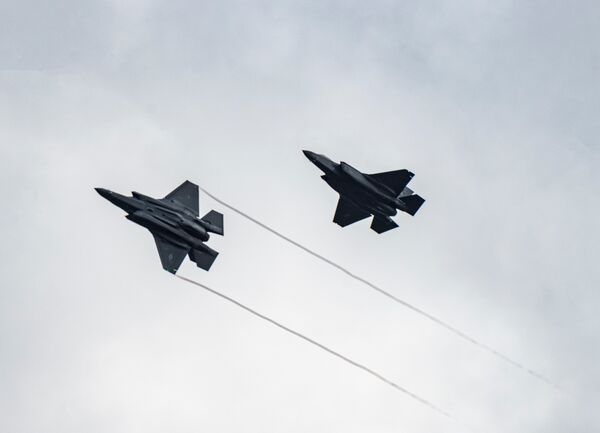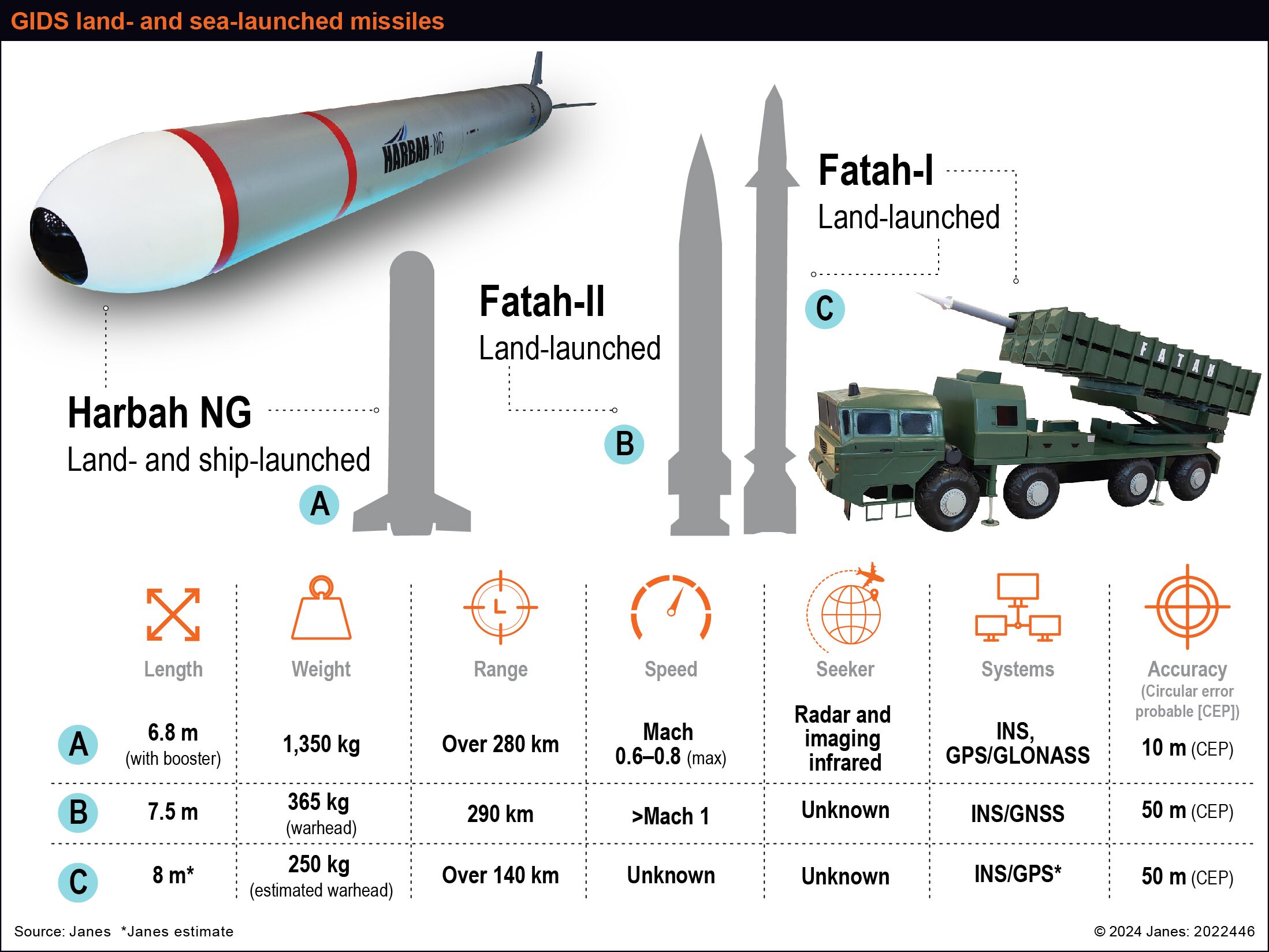- About
- Intara
- Capabilities
- Advisory
- Resources
- News
- Store
Update – Ukraine conflict: NATO shores up enhanced Air Policing mission
28 February 2022
by Gareth Jennings


A pair of USAF F-35As arrive in Romania on 24 February as part of a wider shoring up of the NATO eAP mission. (US Air Force)
NATO members have increased the number of aircraft committed to the alliance's enhanced Air Policing (eAP) mission following Russia's further invasion of Ukraine on 24 February.
With the current already reinforced eAP mission comprising combat aircraft from Belgium, Bulgaria, Denmark, France, Italy, the Netherlands, Poland, Portugal, Romania, Spain, the United Kingdom, and the United States, additional aircraft have been sent by Denmark, Germany, the Netherlands, and the US.
“Over 100 allied fighters and enabling aircraft are already patrolling our skies and securing NATO's eastern borders 24/7,” the NATO Allied Air Command said on 26 February. “Together with land and maritime forces of the rapidly deployable NATO Response Force the alliance has activated, we are ready to further protect allies.”
NATO operates several air policing missions within its wider eAP construct, with the Baltic and Southern Air Policing missions being the two chief efforts geared at countering Russia in the east and the Icelandic mission doing the same in the north.
The Baltic mission comprises four Polish Air Force Lockheed Martin F-16 Fighting Falcons, four Belgian Air Component F-16s and four Royal Danish Air Force (RDAF) F-16s in Lithuania and Estonia, and six US Air Force (USAF) Boeing F-15E Strike Eagles operating out of Poland. The USAF has now also forward-deployed six Lockheed Martin F-35A Lighting II Joint Strike Fighters that had recently arrived at Royal Air Force (RAF) Lakenheath in the UK.
The southern mission sees Bulgarian Air Force MiG-29s and Romanian Air Force F-16s and MiG-21s supported by four German Air Force Eurofighters and four Spanish Air Force Eurofighters, as well as two Royal Netherlands Air Force F-35As whose deployment was brought forward with immediate effect following Russia's action in Ukraine. Germany sent a further three Eurofighters to the mission on 24 February, while the Netherlands said it had sent six F-16s and was ready to commit more F-35As. The USAF has sent a number of F-35As from Spangdahlem Air Base in Germany to shore up this mission.
The Icelandic mission comprises Portuguese Air Force F-16s, while other non-NATO missions include UK Royal Air Force Eurofighter Typhoons operating out of Cyprus and French Navy Dassault Rafales from the Charles de Gaulle aircraft carrier operating in the Mediterranean Sea. The deployment of additional nations and aircraft across these missions is expected over the coming days.
The eAP missions are directed by one of two combined air operation centres (CAOCs). The CAOC at Uedem in Germany directs missions that are based north of an imaginary line that transects Europe along the Alps, while those located south of this line (including the Black Sea and the Mediterranean Sea) are directed by the CAOC at Torrejon in Spain.
This story, first published on 25 February 2022, has been updated with new information.
UK continues search to sell surplus Hercules airlifters
16 May 2024
by Gareth Jennings


One of the last C-130Js in RAF service made its farewell flypast in June 2023. The MoD is continuing its search to find buyers for this and 14 other surplus airframes. (Crown Copyright)
The UK is continuing its search to find buyers for its fleet of retired Lockheed Martin C-130J/C-130J-30 Hercules airlifters, with the UK Ministry of Defence (MoD) telling Janes that it has identified several potential buyers.
The Royal Air Force (RAF) retired one ‘short' C-130J (C5 in UK service) and 13 ‘stretched' C-130J-30 (C4) airframes on 31 March 2023 (with the type's final farewell flypast following in June 2023), all of which, along with an additional C5 aircraft carried over from the previous round of retirements in 2015, are now available to overseas buyers.
“The Defence Equipment Sales Authority (DESA) is managing the sales programme on behalf of the MoD and continues to actively pursue sales with a number of potential buyers,” the ministry said on 10 May.
BAE touts long-term relevance of Eurofighter to UK
16 May 2024
by Gareth Jennings


Currently scheduled to be retired in 2040, the Eurofighter Typhoon FGR4 could serve the UK as a force multiplier to its higher-end F-35 and Tempest aircraft well beyond that date, BAE Systems says. (Crown Copyright)
BAE Systems has touted the continued relevance of the Eurofighter Typhoon FGR4 to the UK, saying the ‘fourth-generation' combat aircraft can provide much-needed mass and resilience beyond its projected out-of-service date (OSD).
Speaking at the site of the BAE Systems' Warton production facility in northern England on 14 May, Mike Baulkwill, Combat Air Strategy director at the company, said that, with the international Eurofighter operator base set to fly improved and upgraded variants of the type out into the 2060s, the Royal Air Force (RAF) could retain its own aircraft beyond its current 2040 OSD.
“The Typhoon will be relatively enduring, as sometimes you will not want to use your higher-end aircraft [such as the Lockheed Martin F-35B Lightning and/or Tempest] – the Typhoon and the Typhoon Evolution [along with Eurofighter Evolution, the name being given to the Long-Term Evolution [LTE] mid-life refresh standard aircraft now being developed] is in a good place for that,” Baulkwill said.
Pakistan Army inducts Fatah-II rocket launcher
16 May 2024
by Kapil Kajal


The Fatah-II rocket is initially propelled using a single-stage dual-thrust solid rocket motor, which then disengages and glides to supersonic speeds to engage the target. (Janes)
The Pakistan Army has initiated inducting the Fatah-II multiple rocket launcher (MRL), the Pakistan Armed Forces' Inter-Services Public Relations (ISPR) agency said on 15 May.
“Fatah-II is being inducted in Pakistan's Artillery Divisions for stand-off [capability] and to engage the targets with precision,” ISPR said.
The rocket system will enhance the “reach and lethality of [the] Pakistan Army's conventional arsenal”, ISPR added.
The Pakistan Army also test-fired Fatah-II on 15 May. The test was “aimed at perfecting the launch drills and procedures”, according to ISPR.
Fatah-II – with a maximum strike range of 400 km – is equipped with a “navigation system, unique trajectory, and manoeuvrable features, which make the launcher capable of engaging targets with high precision and defeating any missile defence system”, ISPR said.
The MRL is developed by Pakistan's state-owned Global Industrial & Defence Solutions (GIDS) as an extended-range variant of the Fatah-I MRL.
NATO members have increased the number of aircraft committed to the alliance's enhanced Air Policing...
Latest Podcasts
The value of OSINT for intelligence sharing
In this episode Harry Kemsley and Sean Corbett are joined by Phil Ritcheson Ph.D. to discuss why intelligence sharing is now more important than ever. They discuss the growing need for allied and partnership and how by using open sources facilit...
Listen nowJanes Case Studies
Using Janes Intara to build a common intelligence picture: Russian build up on the Ukrainian border
View Case StudyNews Categories
 Defence Details
Defence Details